Alexandria, Egypt – An Unforgettable Day Trip
It’s a cool, rainy day in August and I’m sitting in front of my computer looking at a piece of greenish sedimentary rock that may or may not be a piece of Cleopatra’s palace. I picked it up on the cobble beach of Alexandria’s waterfront not far from the site where the legendary palace is now under the waters of the Mediterranean. It takes me back to a day in February when I got a far too brief introduction to the wonders of this most famous of Egyptian cities – Alexandria. Won’t you join me as I recount the events of that memorable day?
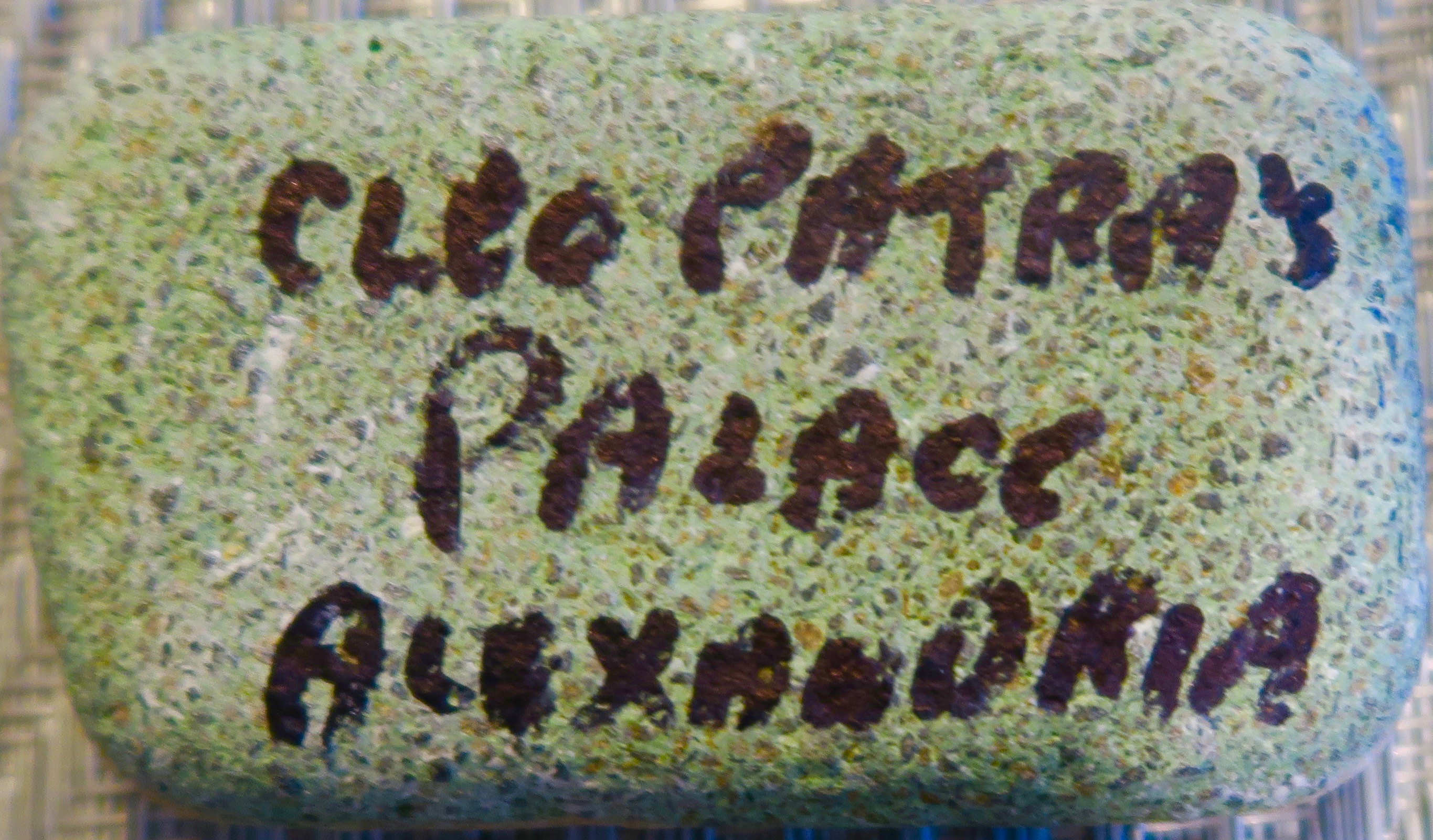
A lot of tour companies offering trips to Egypt don’t include Alexandria on their itineraries. The Canadian company Adventures Abroad does and that was one of the key reasons Alison and I chose this trip. Going to Egypt and not seeing Alexandria would be like going to Greece and missing the Parthenon; unthinkable for me. The list of famous sites and people associated with Alexandria dwarfs that of any other Egyptian city, including Cairo. Home of the world’s most famous library and one of the seven wonders of the ancient world, the pharos, Alexandria combines ancient Egyptian, Greek, Roman, early Christian, Jewish and Ottoman history into a compendium that is truly unique. From it’s foundation by Alexander the Great it has been a magnet for other great historical figures including Julius Caesar, Marc Anthony, Cleopatra, Pompey, St. Mark, Philo the philosopher and the heretical Christian bishop Arius. Euclid invented geometry here as Ptolemy did geography. In more modern times it attracted Napoleon and later became a Mediterranean hotspot for artists and writers as it slowly made a decline into a genteel decadence best described in Lawrence Durrell’s Alexandria Quartet. Finally, it was the home city of the first Egyptian to rule in Egypt in over 2,000 years, Gamal abdel Nasser. Who wouldn’t want to visit this amazing place?
Our journey to Alexandria will be a day trip from Giza and requires an early rise, but not so early that we don’t get this wonderful view of the Pyramids from our hotel, the Meridien.
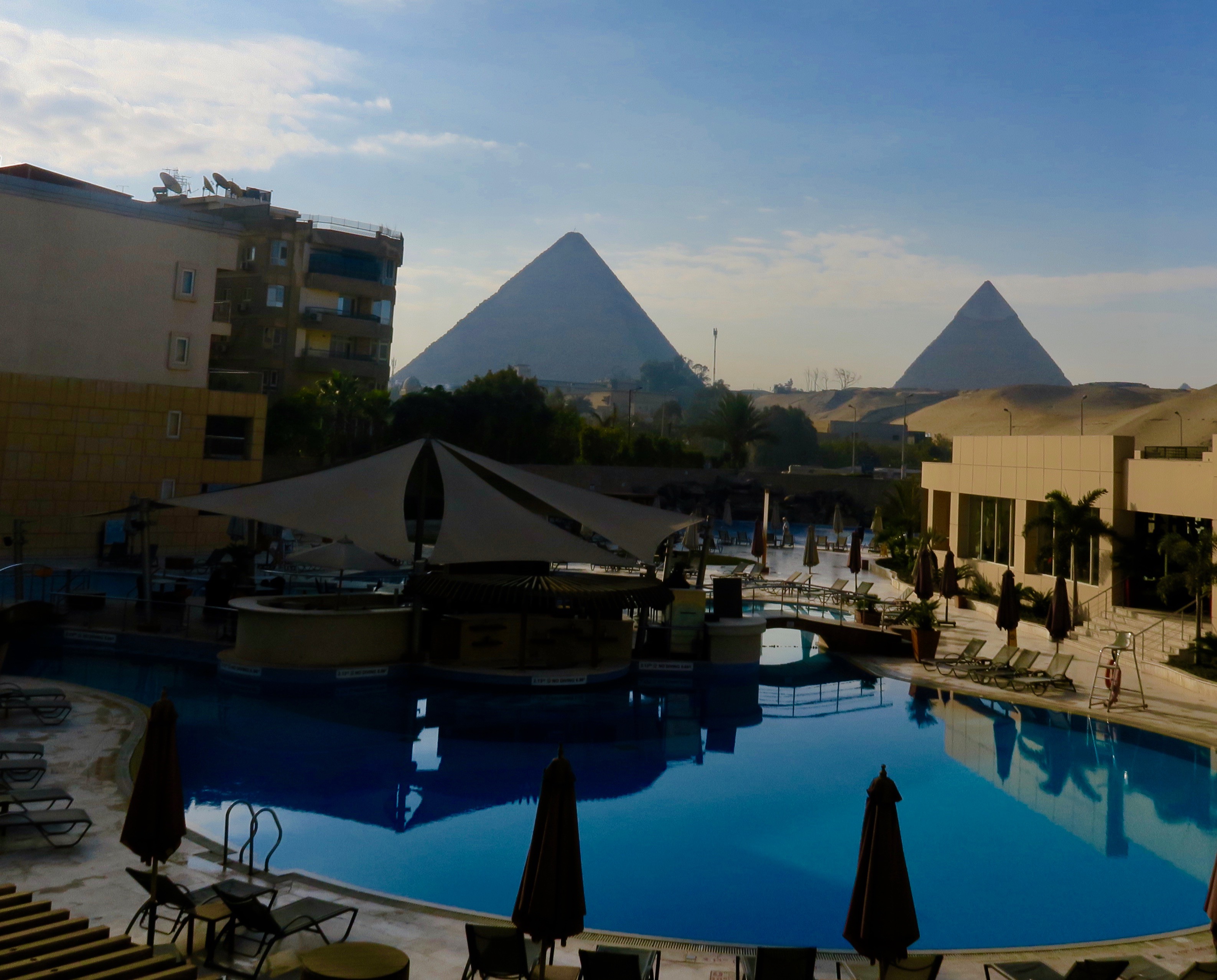
The distance from Giza to Alexandria is 222 kms. (138 miles) via the Desert Highway and should take us about two and a half hours. I am surprised at how quickly we get out of the usually clogged streets of Giza and onto the very good four lane highway that makes a bee line from Giza to Alexandria. Despite being called the Desert Road the Sahara rapidly disappears as we enter an area of intense agriculture with banana trees, orange groves, grape vines and vegetable gardens. I use the word intensive because the fields are full of agricultural workers and modern machinery is virtually non-existent.
I notice that there are a lot of cylindrical shaped mud dried towers with holes all over them. Ahmed Hashem, our excellent Egyptian guide, explains that these are gigantic pigeon traps. The Egyptians love eating wild pigeons and they attract the birds into these towers with food where they make themselves at home and are easy pickings once they are nicely fattened up. Unlike, Hansel and Gretel, they don’t come to a happy ending.
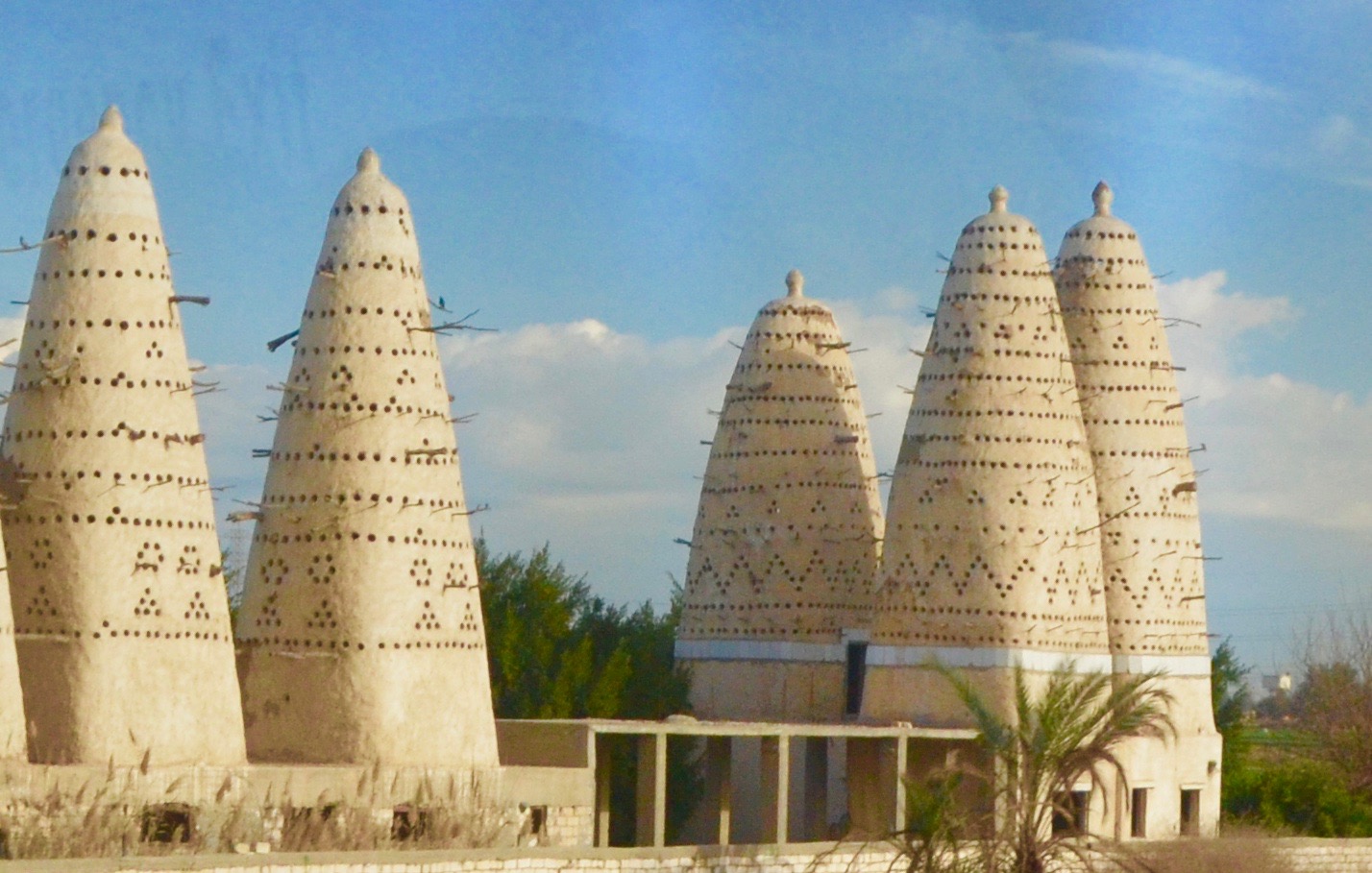
In what hardly seems like two hours we are into the outskirts of Alexandria and navigating our way towards the old part of the city down some lanes that are barely wider than the bus. Despite the narrow streets, the traffic in Alexandria is far more sane and quiet than that in Giza or Cairo. I can’t help but notice one anachronism, at least by North American standards. All of the taxis in Alexandria are Ladas, the famous Russian p.o.s. that briefly vied with the Yugo as the worst cars of all time to be offered for sale in Canadian showrooms. It tells me that the Alexandrines must be great mechanics to keep these things on the road.

Catacombs of Kom el Shoqafa, Alexandria
Our first stop in Alexandria is thankfully not an outside venue as, believe or not, it is raining in Egypt. The Catacombs of Kom el Shoqafa were not discovered until 1900 when a donkey allegedly fell through a hole in an area of forgotten rubble and landed smack dab in the middle of some of the most famous underground tombs in ancient Egypt. Dating from some 500 years after the city was founded in 332 B.C. by Alexander, the tombs combine ancient Egyptian with Greek and Roman motifs that makes them quite different than anything else you’ll see in Egypt.
You start by walking on a circular staircase that winds its way around this central well like structure.
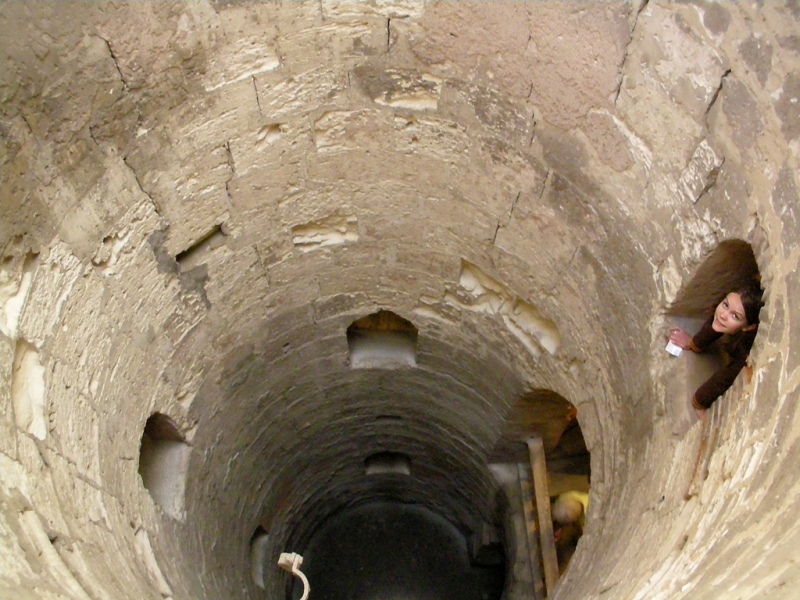
Then enter the tombs via this entrance guarded by two cobras with a Medusa shield above their heads. This is an example of the mix of historical styles found in these catacombs.
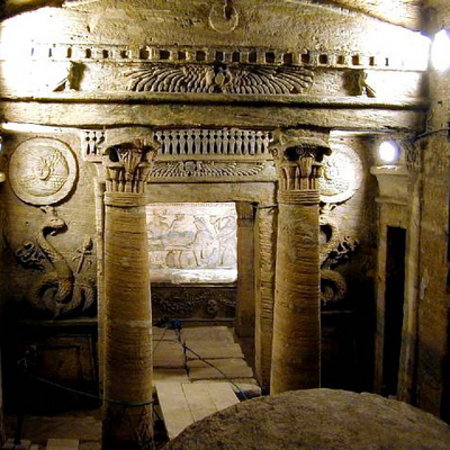
We’ve got a lot more places to see in Alexandria so we’ll move on from the catacombs and back to the surface where it’s still raining.
Pompey’s Pillar and the Serapeum
Pompey, or Pompey the Great, was one of the original Roman triumvirate that also included Julius Caesar and Crassus. He was undoubtedly one of the greatest Roman generals of all time and an able statesman, but after Crassus was killed in Parthia and his wife Julia, Caesar’s daughter, died in childbirth, things fell apart and the first of the civil wars that ultimately led to the destruction of the Roman republic, began. Pompey came out on the losing side and fled to Egypt where he believed he would receive sanctuary from the boy King Ptomely, who instead agreed on his advisors suggested course of action. Pompey was assassinated and beheaded as he came ashore at Alexandria in 48 B.C. Caesar was aghast at this turn of events as Pompey was revered by many powerful Romans.
So in respect for the great general and rival Caesar had this giant pillar erected to commemorate his memory, right?
Not quite. Pompey’s Pillar was in fact erected by the Emperor Diocletian over 350 years after Pompey died and nobody seems to know how it got its current name. Whatever you call it, it is one hell of a monument. It’s made of a single piece of Aswan granite and stands almost 90 feet high. The rain was kind enough to drive most of the other tourists indoors so I got some decent shots.
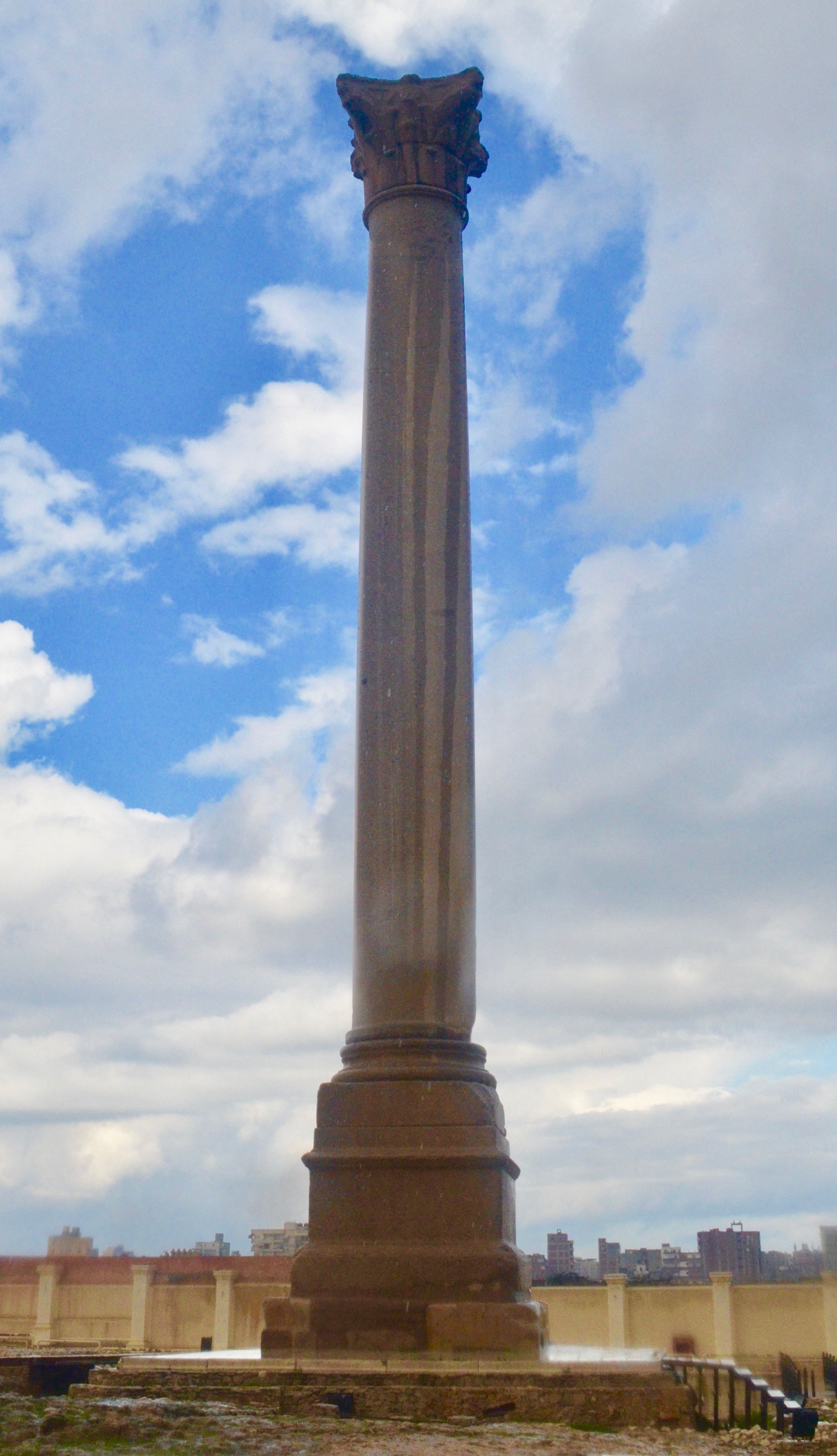
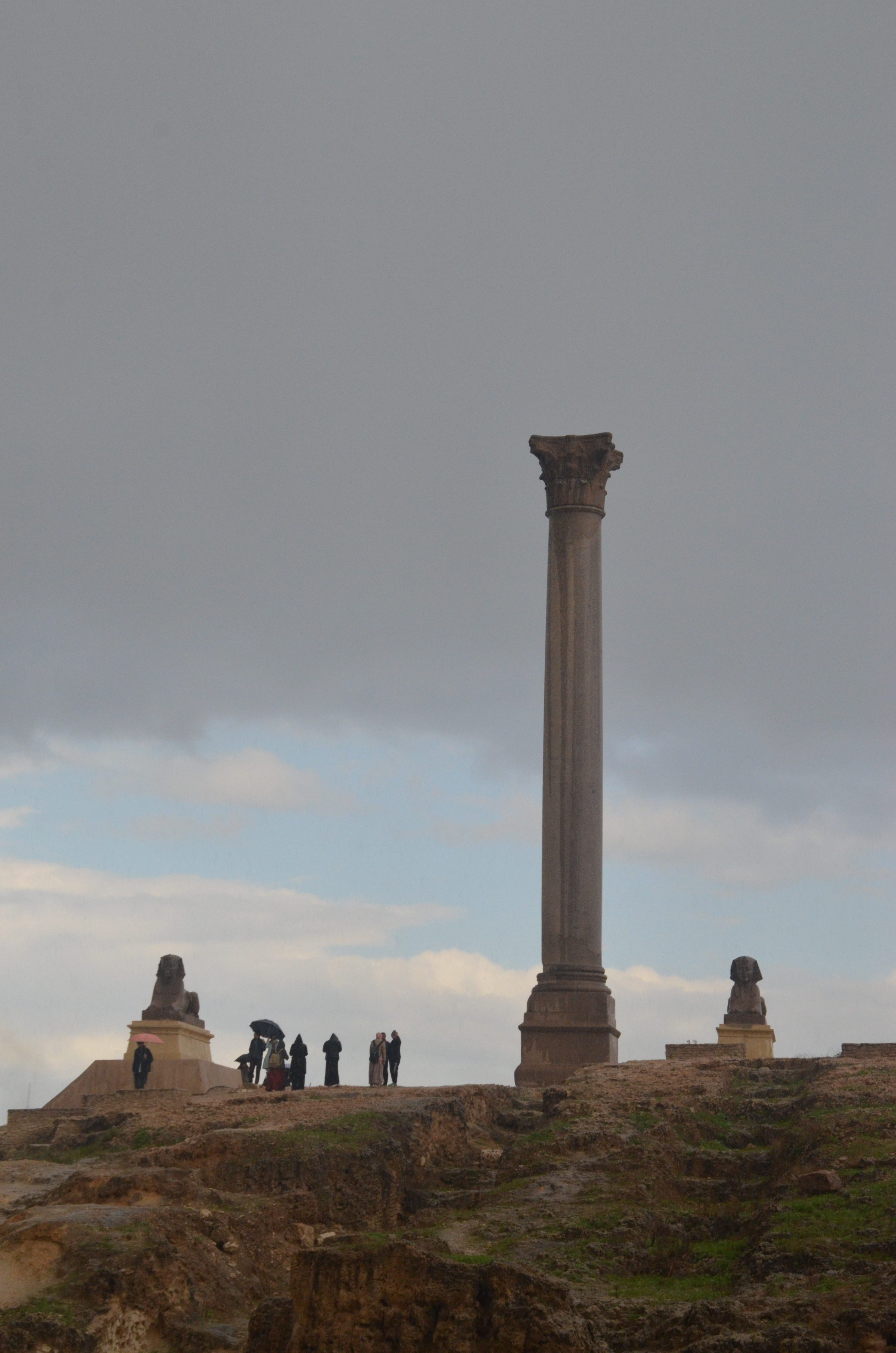
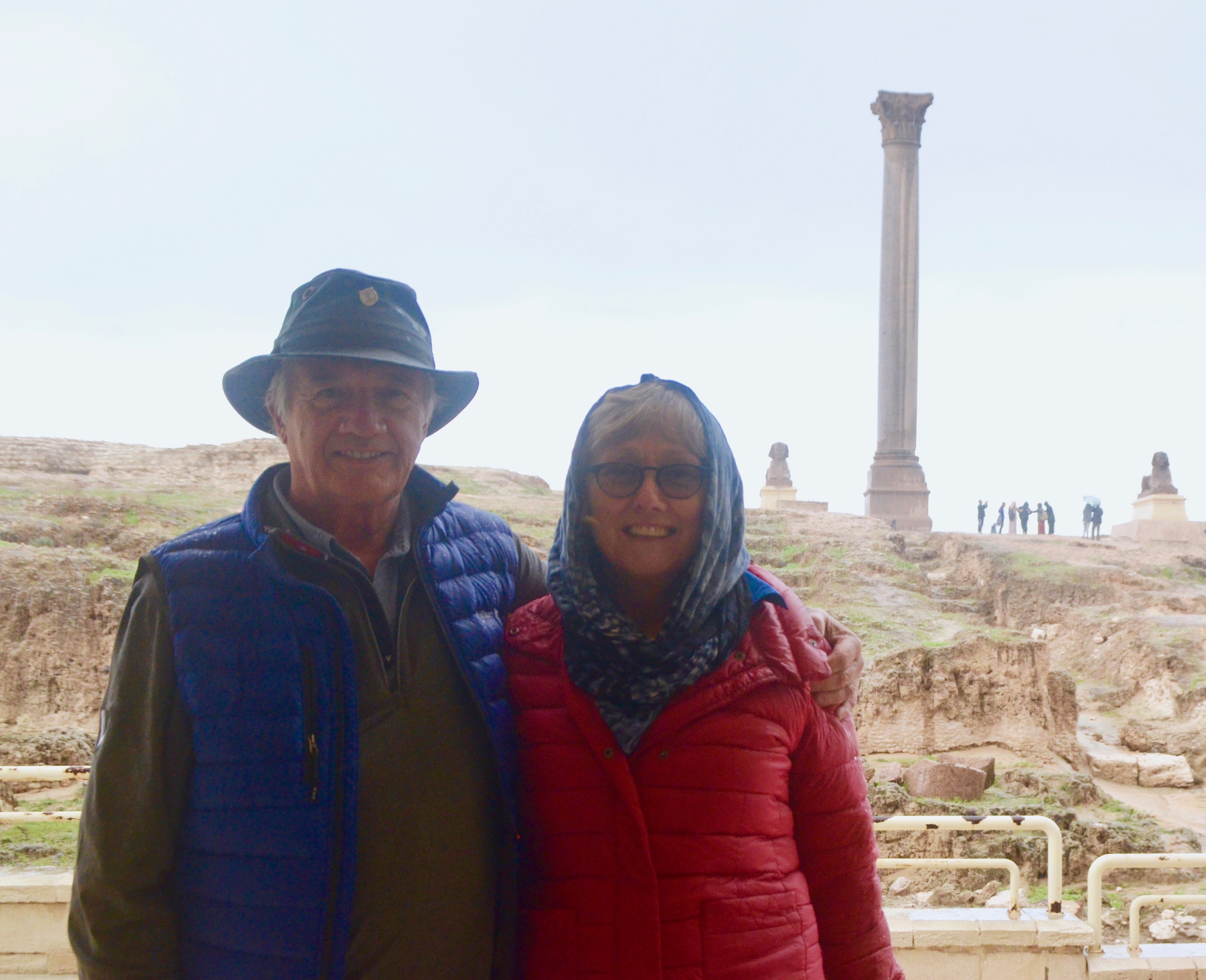
Pompey’s Pillar does have a grandeur that is emphasized by its singular location that makes it visible from a great distance. Flanking the pillar are two absolutely marvellous sphinxes with the head of Hatshepsut. Inscrutable or what?
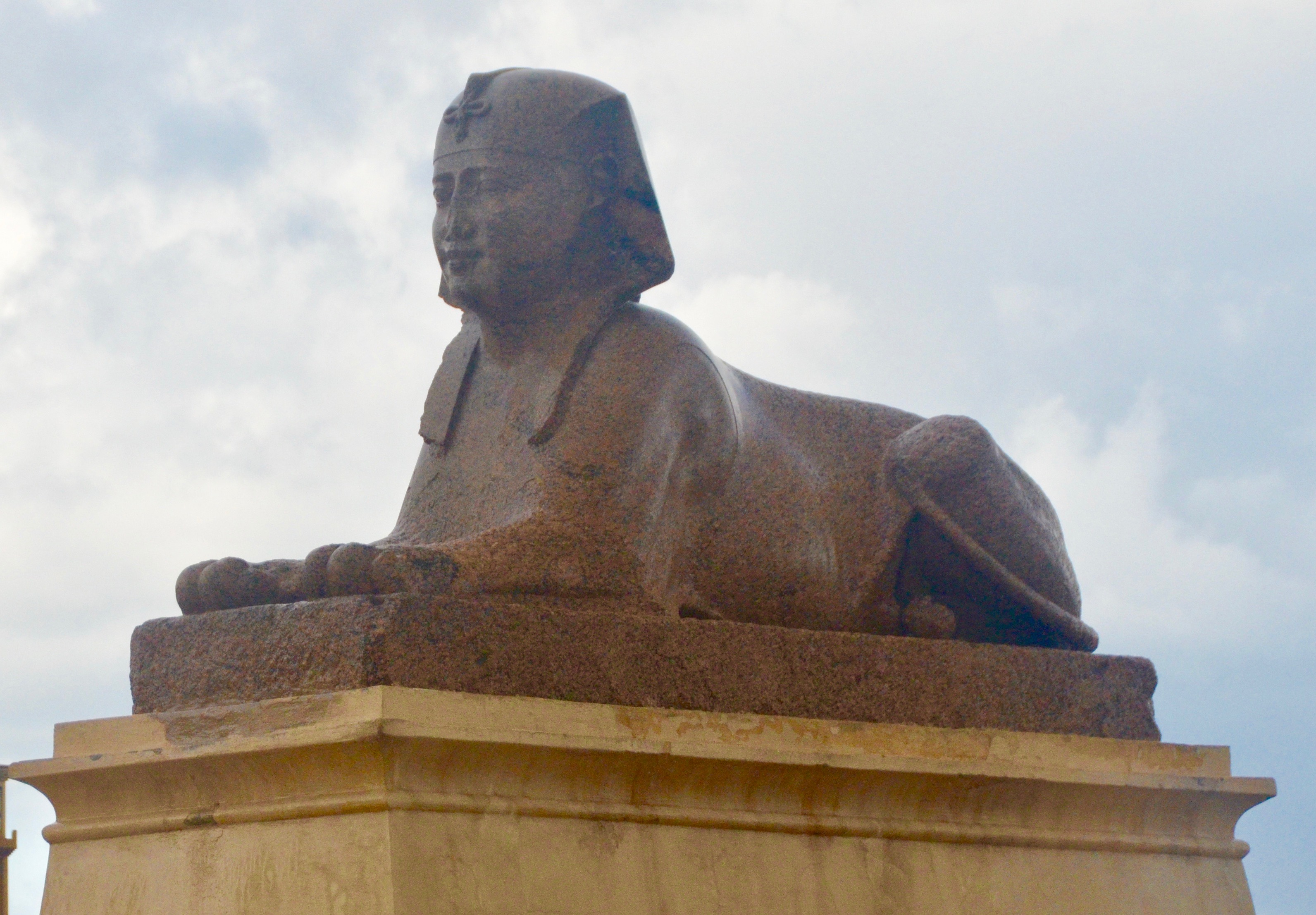
Part of the grounds that contains Pompey’s Pillar also contains what’s left of the ancient serapeum, arguably the place where the old gods were, once and for all, supplanted by monotheism.
The serapeum was a temple complex dedicated to the worship of Serapis who was an Egyptian/Greek hybrid god associated with the cult of the sacred bull Apis. Alexandria was the centre for the worship of this god and the serapeum here was the largest in the Roman Empire. Here is a plan of the temple and Pompey’s pillar surrounded by a huge cloister like structure.
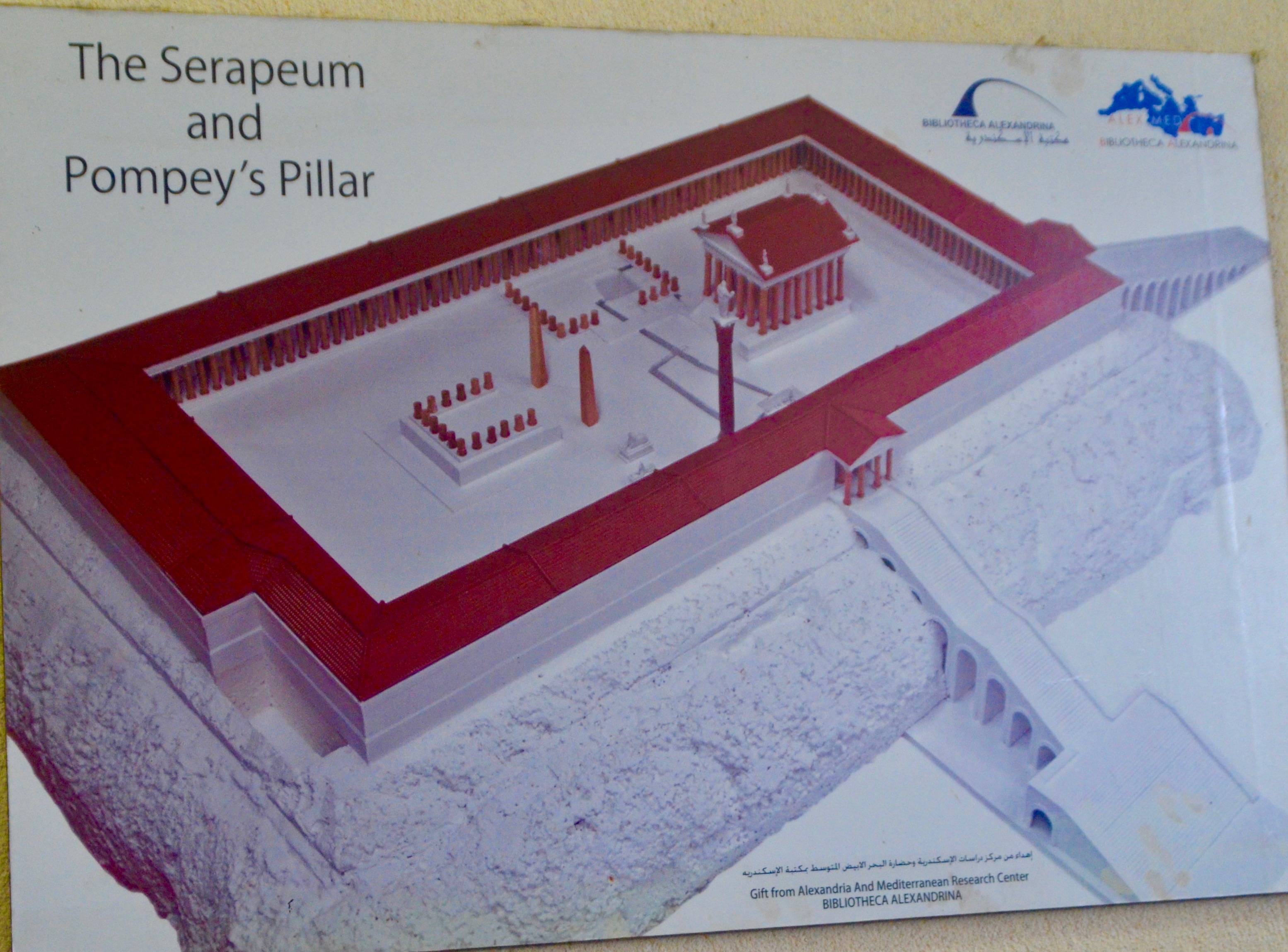
This is what’s left today and the story of how that came to be is instructive and to me, a bit heart breaking.
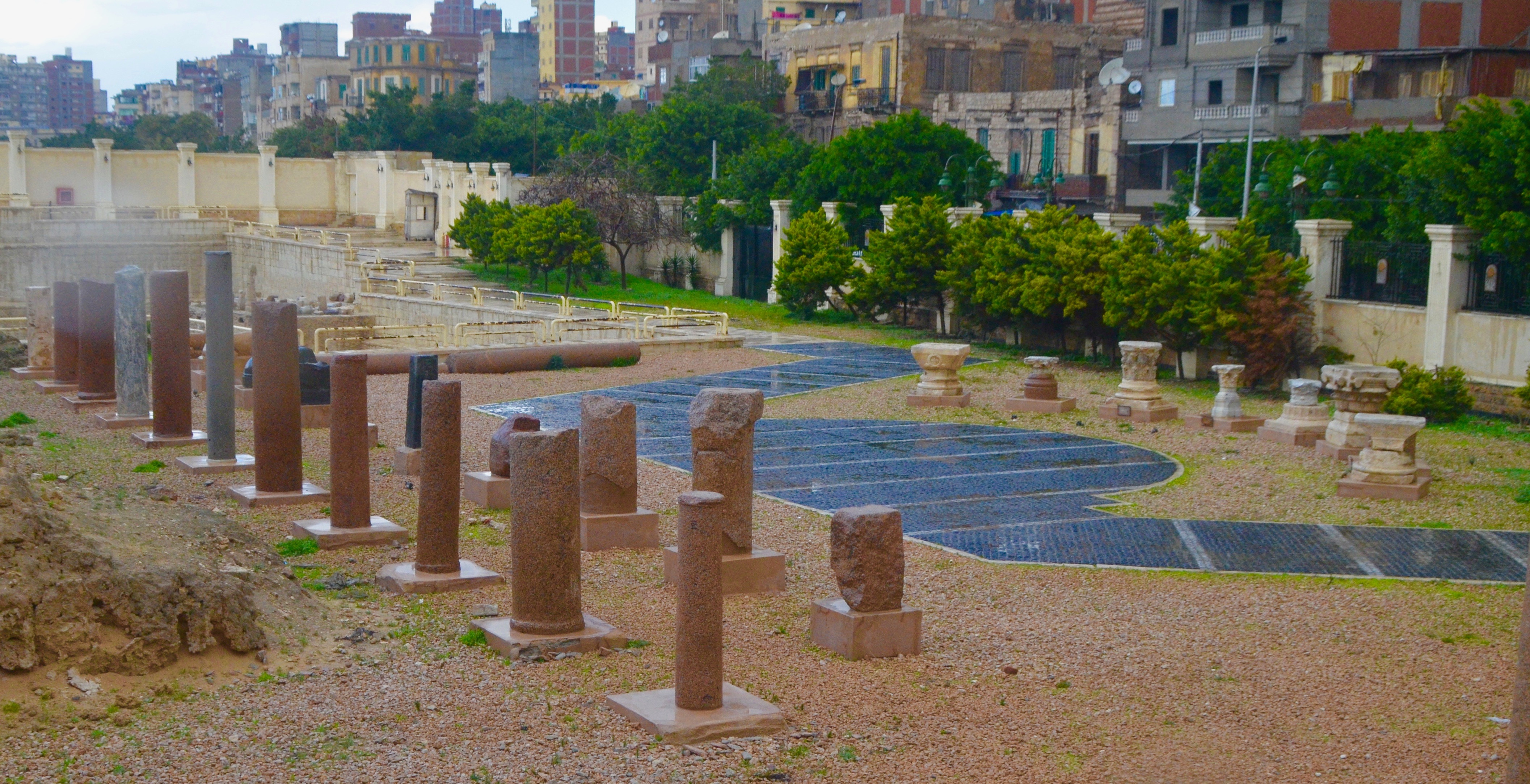
When Constantine converted to Christianity and named it the official state religion, the worshipers of the old gods did not just pack up their beliefs and go away. Paganism, as the Christians called it, continued for a long time, especially in Alexandria, but tensions between the two groups mounted as the Christians, apparently forgetting what the Romans had done to them, banned the worship of the ancient gods. In 391 a mob of Christians descended on the last hold outs who were holed up in the serapeum and smashed all the images, killed a lot of ‘non -believers’ and effectively ended four thousand years of polytheism in favour of just one god. The irony was that the Christian rule in Alexandria would barely last a couple of hundred years as in 641 the Muslim armies marching in the name of Allah deposed the Christian god and have remained firmly in charge ever since.
If there was ever a place where the old gods finally died, it was here in Alexandria.
The Roman Amphitheatre, Alexandria
Next up was the Roman amphitheatre which is in pretty good shape as far as amphitheatres go and is the only one in Egypt. However, I have to disagree that it is in fact an amphitheatre, which are always oval shaped. This is clearly a theatre in the Greek style like the famous one at Epidaurus.
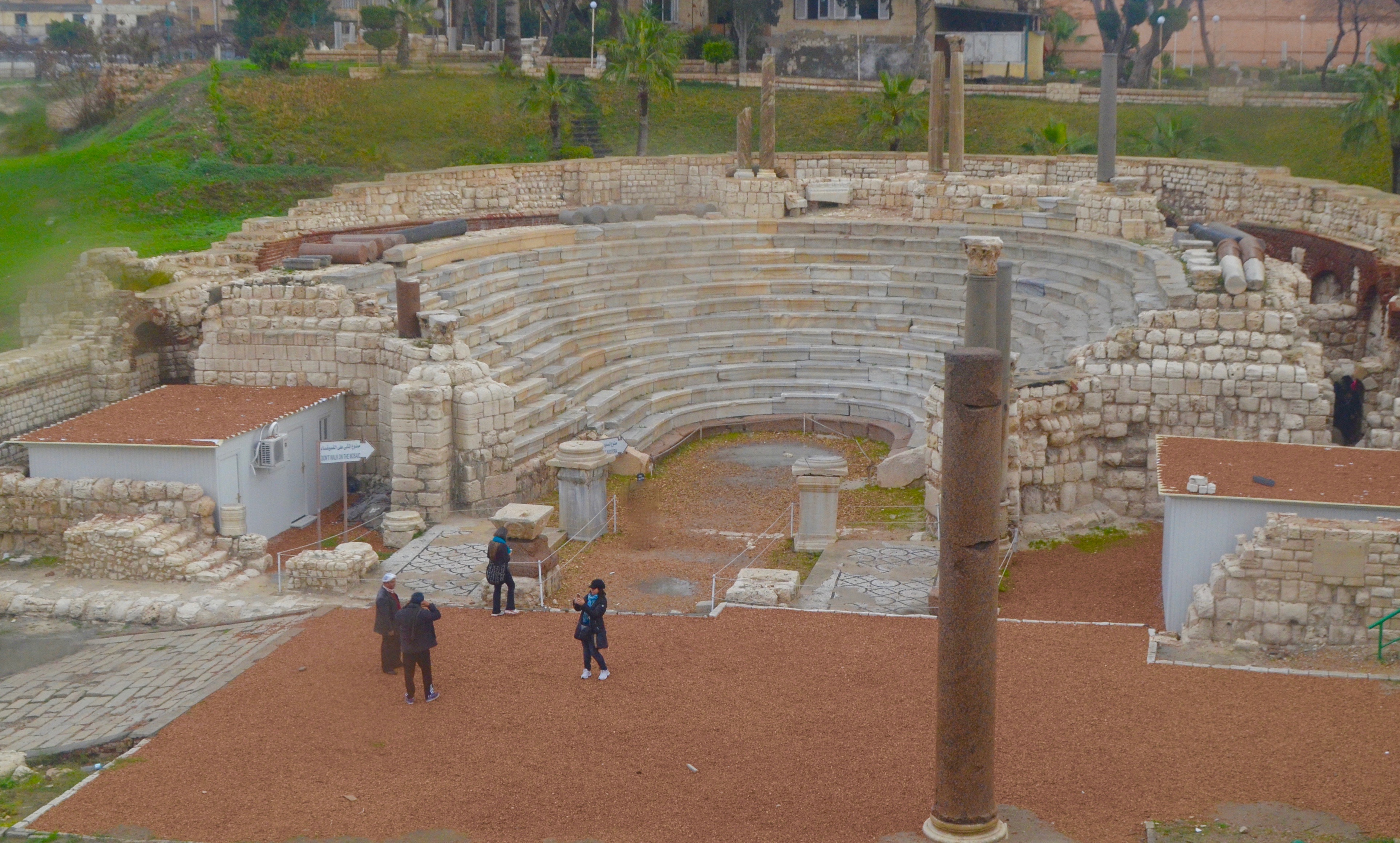
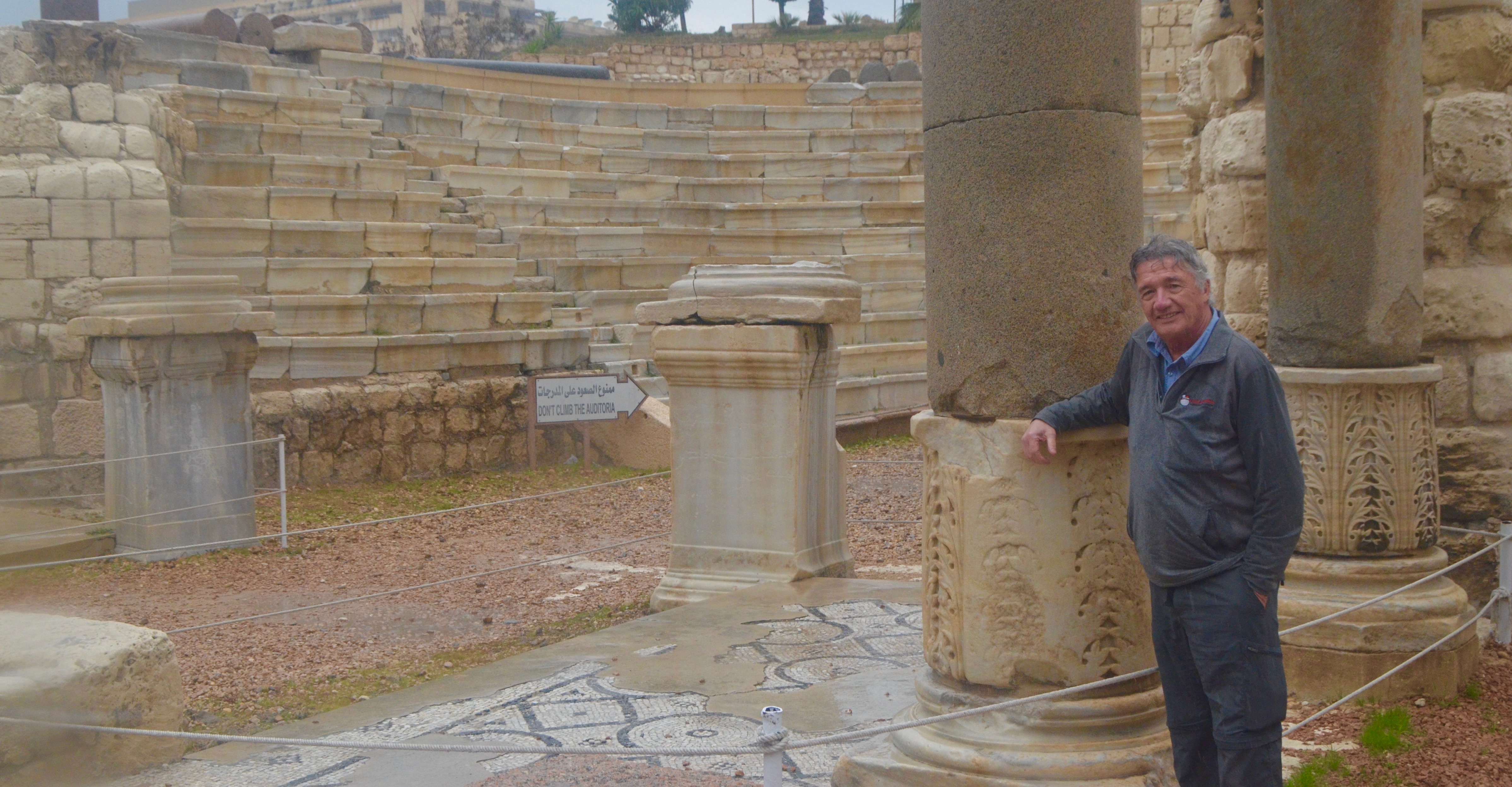
Tikka Grill
By now it was time for lunch and we headed to a spot right on the Mediterranean that was once the favourite of that sly old trickster, Yasser Arafat. The Tikka Grill is divided into two distinct sections, one for the locals and one for the tourists of whom we were the only Western group. We were outnumbered by Chinese tourists at least four to one. I feared that the lovely location overlooking the Citadel and the site of the famous lighthouse, would mean that the restaurant relied upon this rather than good food as its raison d’etre. But I needn’t have worried, Adventures Abroad obviously knows that its guests want to chew on something decent other than the scenery – the meal was delicious.
I could eat these fried prawns until I couldn’t get up from the table.

I’m not usually a whole fish type of guy, mainly because of the bones, but our individual sea bass were easy to separate flesh from bone and had a wonderful fresh flavour.

The only bummer was no wine or beer, but the lemonade was freshly squeezed and a perfect accompaniment to seafood.
Refreshed, I took a stroll on the beach beside the restaurant which was is where I found the putative piece of Cleopatra’s palace. The ruins of the palace where she and Marc Anthony famously died in each other’s arms, are actually sunken just offshore and there were a number of dive shops offering trips to visit the underwater site.

Across the water, dotted with Alexandrine fishing boats was the Citadel of Qaitbay which dates to the late 1400’s.
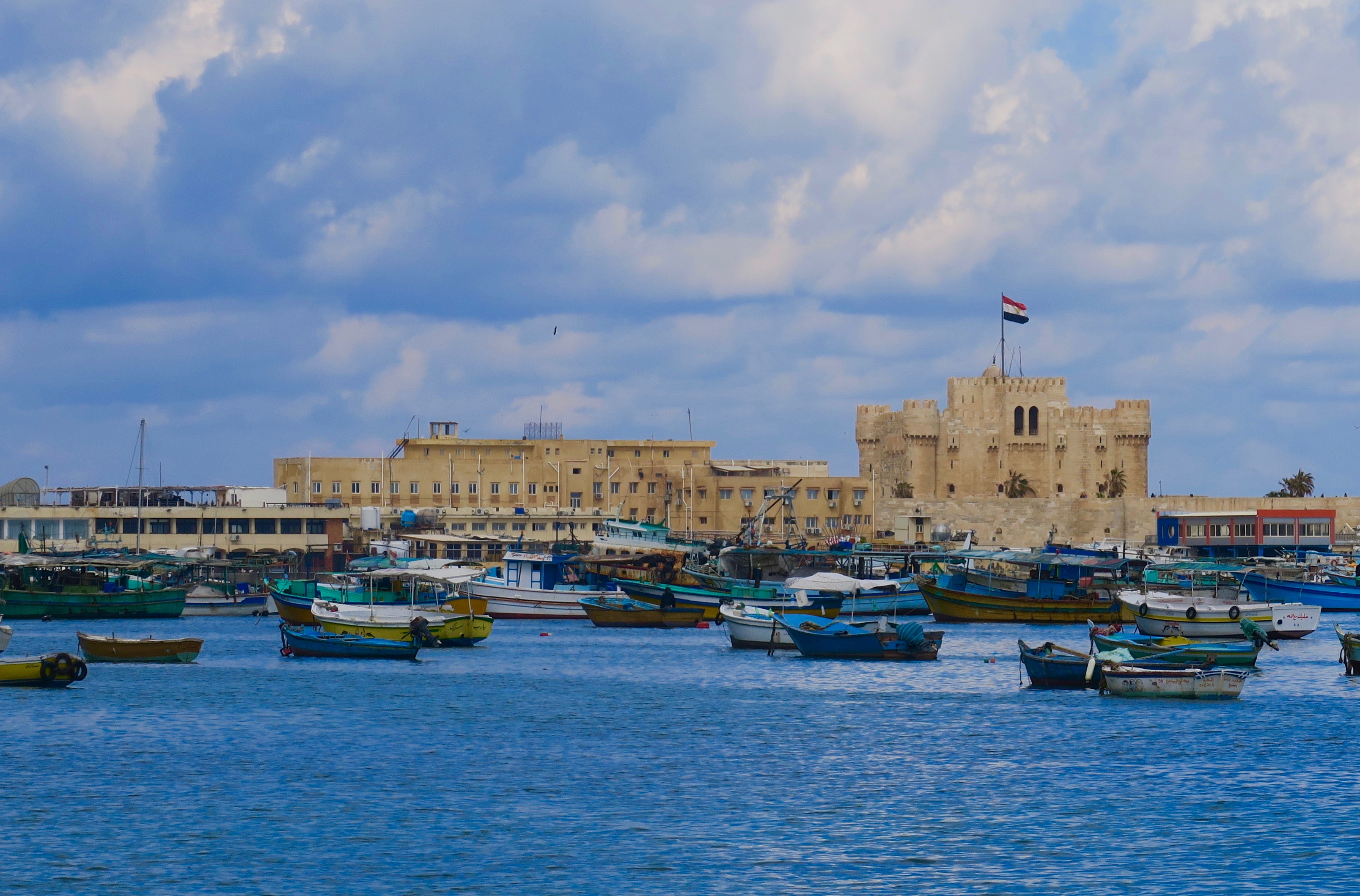
On the opposite side of the water Alexandria’s famed corniche is lined with the belle epoque and beaux arts buildings that followed on the construction of the ten mile waterfront road by Italian-Egyptian architect Pietro Avoscani in the 1870’s. They look grand at a distance, but on closer inspection most of these buildings are literally falling apart. It’s a sad symbol of the decline of Alexandria as a major Mediterranean city.
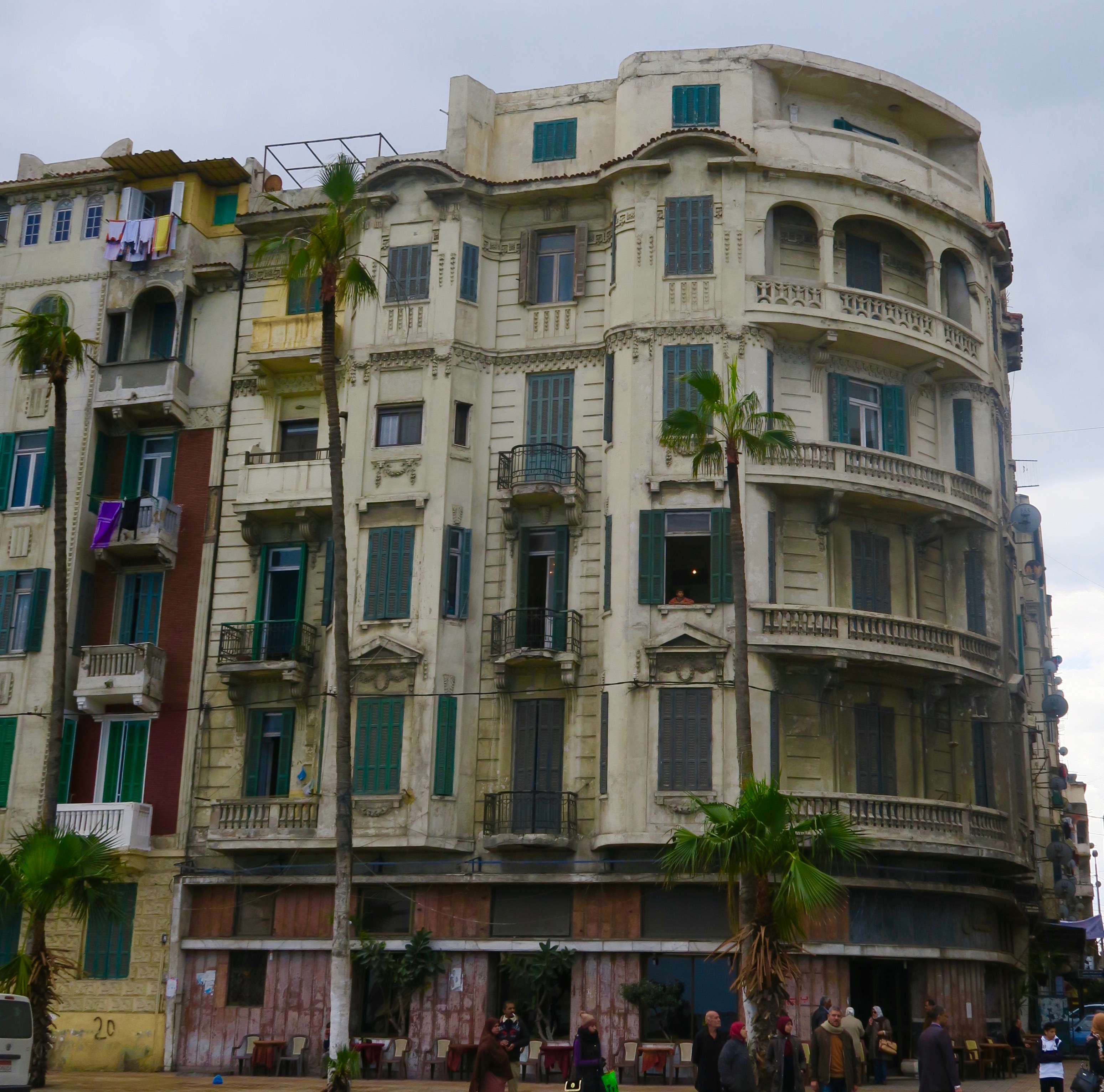
The Lighthouse of Alexandria
Our next stop had me in an elevated state of anticipation as we headed out to the end of the corniche at the entrance to the Citadel. It wasn’t the Citadel that had me worked up, but rather what lay just off the breakwater that connected the mainland to what had been an island in the past. Walking out along the rocks I could see the remnants of one of the Seven Wonders of the Ancient World, the great pharos or lighthouse of Alexandria. Completed in about 280 B.C. the only thing taller in the ancient world was the Great Pyramid. The mother of all lighthouses and model for all to come it stood 350 feet feet tall and looked something like this.
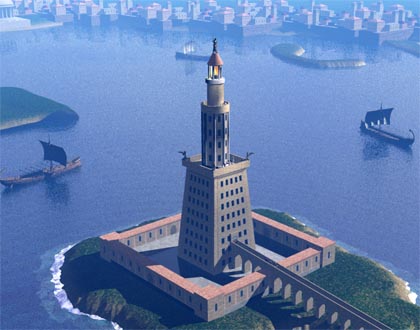
This is what’s left today – just a pile of rocks offshore. Was I upset, disillusioned or disappointed? Not really, I knew there was nothing there long before my visit and expected this. The reality is that I was standing on one of the most important places in history and that was more than enough.
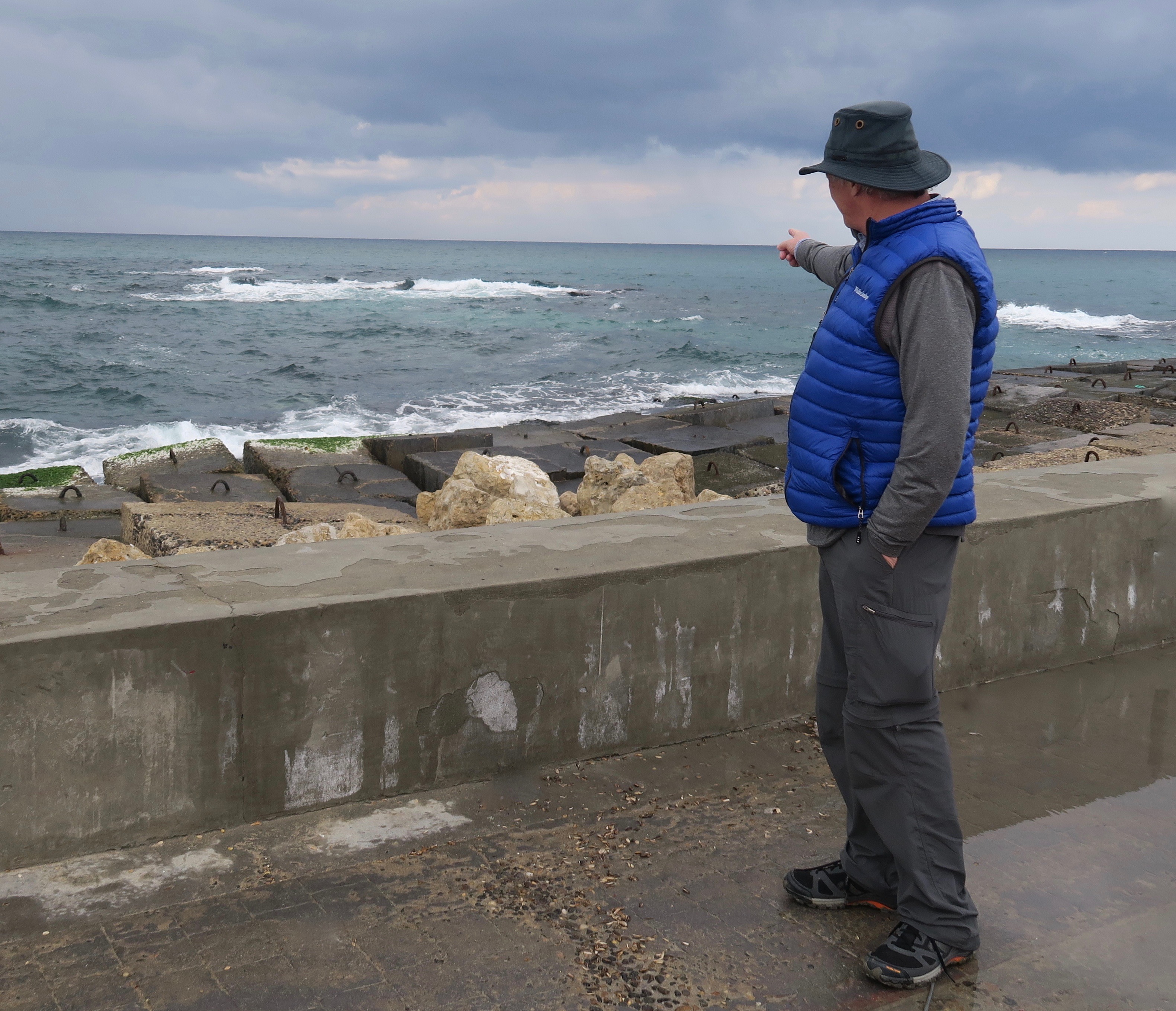
Looking back there was a fine view of Alexandria from out here and the usual chance to get a good shot of a fishing boat.

The Library of Alexander
Our last stop in Alexandria was at once a combination of the old and the new. The original Library of Alexandria was created by the Ptolemaic dynasty in roughly 300 B.C. and was an adjunct to the Alexandria Museum which was actually more a concept than a place. It was a place where the most inquisitive and intelligent men of the day could gather to discuss philosophy, mathematics and natural sciences. The manuscripts in the library were meant to assist them. It drew scholars from all over the world for three and a half centuries, including Plato, Herodotus and others. Some of the most important works deposited here were the original manuscripts of the plays of Sophocles, Euripides and Aeschylus. It grew so large that a separate library inside the aforesaid serapeum was built. Then this bastion of learning and enlightenment was destroyed.
Nobody these days, except the Nazis, wants to be associated with book burning and various efforts have been made over the years to cast the blame on scapegoats, most notably the Arabs. However, it does appear that the original library was accidentally burned during the time that Julius Caesar was fighting for control of the city. The portion in the serapeum went up in the flames of 391 when the entire complex was destroyed by raging Christians.
The good news is that the Library of Alexandria is back as the Bibliotheca Alexandrine which is a beautiful looking building that is the focus of revitalizing Alexandria.
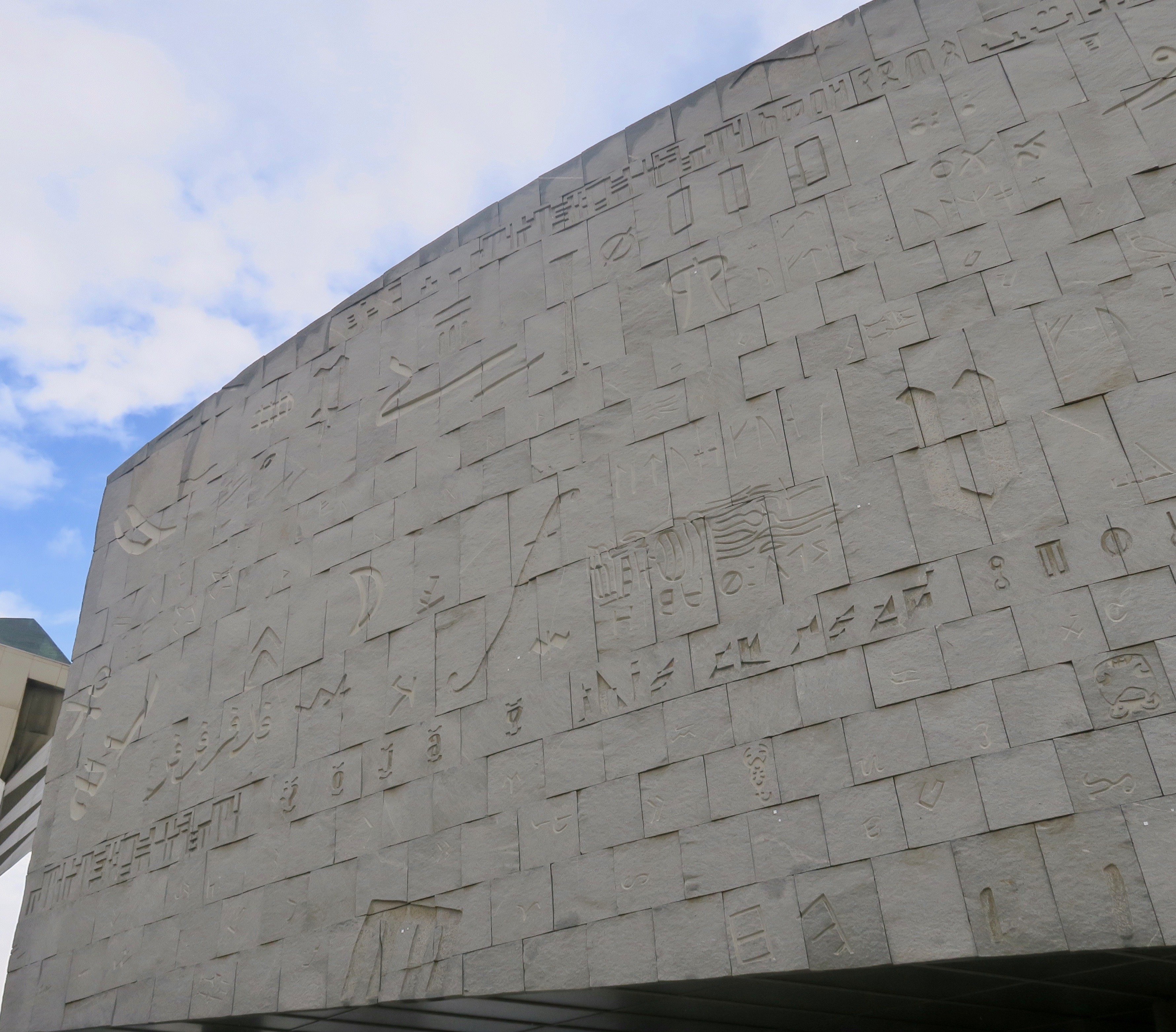
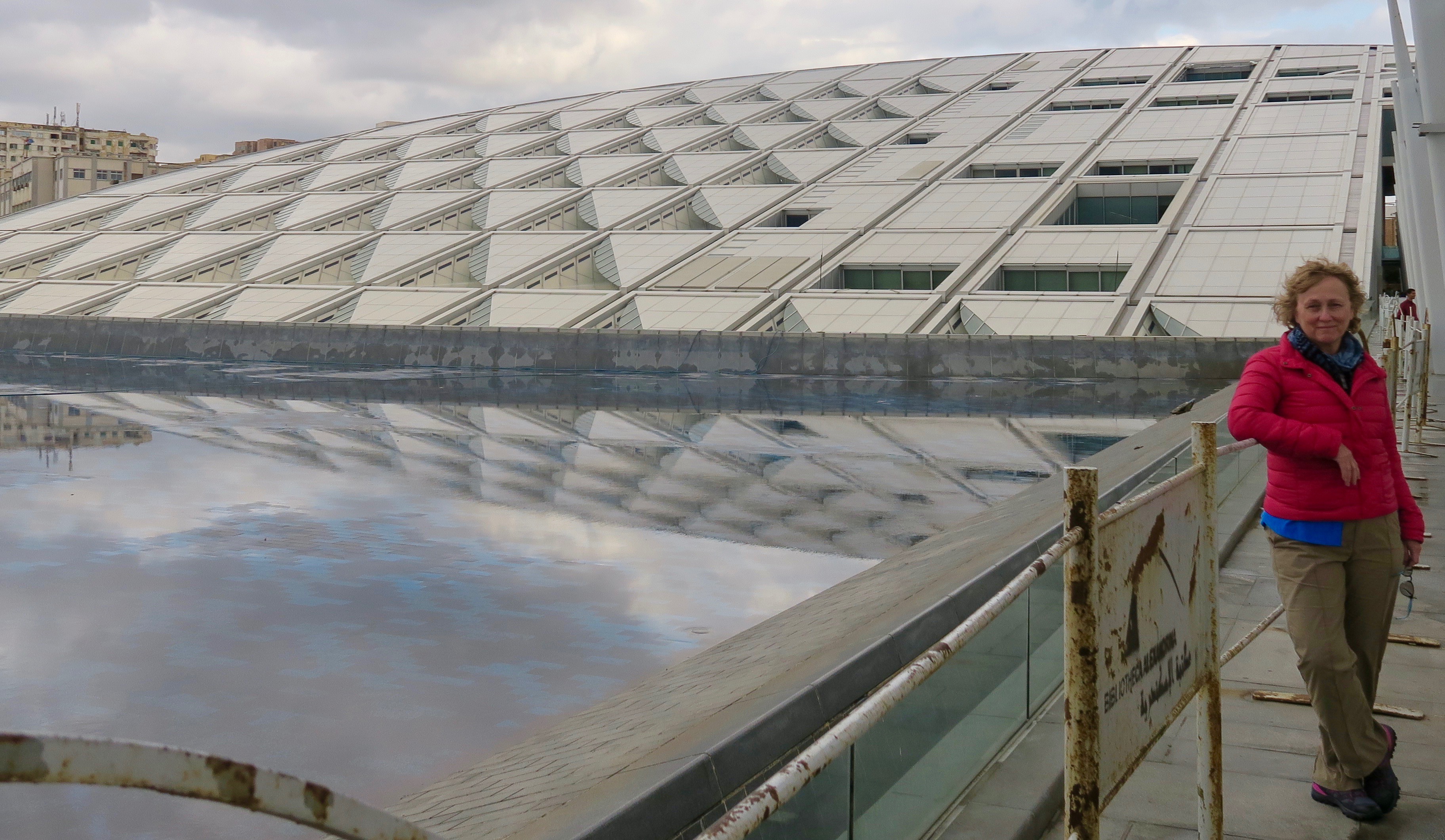
We were given a guided tour of the interior which is airy and spacious and just as the original contents of the first library were actually scrolls and not books per se, in this modern library much more information is in digital form than stored in books.
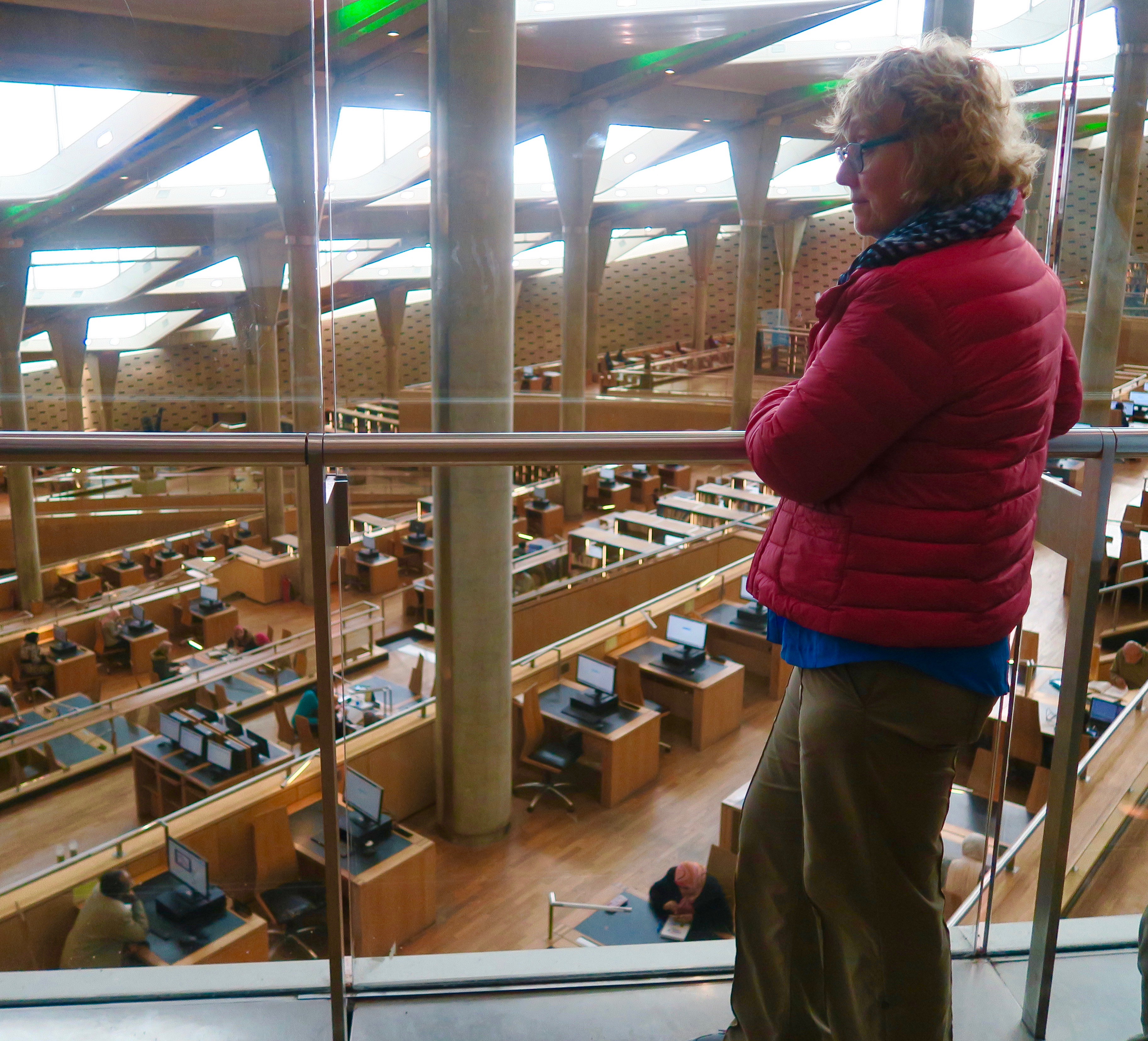
I finished my visit to Alexandria by saying thanks to the man responsible for all this, the one and only Alexander the Great.
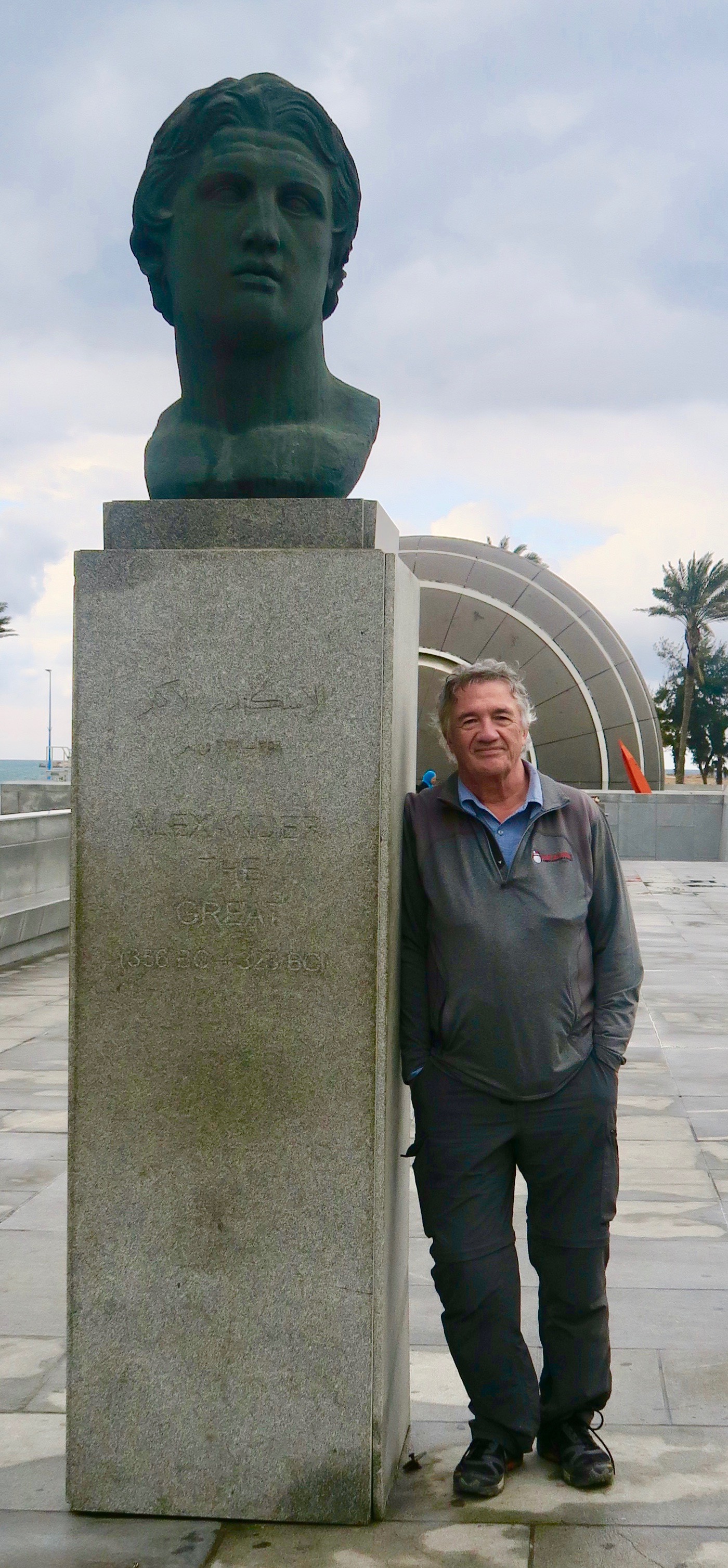
I hope you’ve enjoyed this whirlwind tour of Alexandria enough that it inspires you to spend some time there. I know it did for me.
You can find about a dozen other posts on Egypt on my website including Abu Simbel, the Valley of the Kings and of course, the Pyramids and Sphinx. Here is a link to a photo gallery on Egypt which includes photos from all the posts and more.

